Discover the perfect agriculture hand tools to enhance your gardening and farming efficiency. Agriculture has come a long way since its early days, and at the heart of this evolution are the tools that farmers use. Hand tools are essential for various tasks such as digging, planting, and harvesting. Having the right agricultural hand tools can make the work more efficient and less physically taxing. From simple hoes and shovels to more specialized instruments, these tools play a significant role in promoting eco-friendly and productive farming.
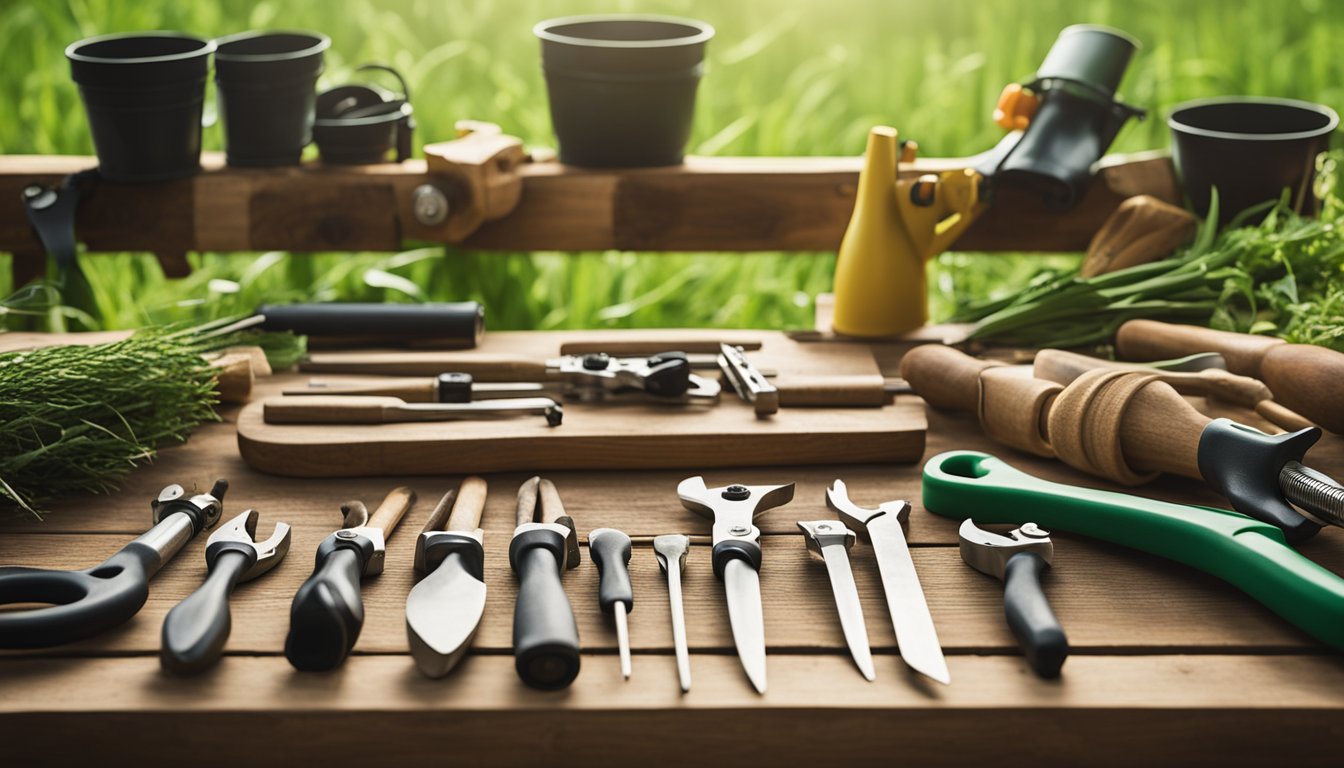
Understanding the types of hand tools available is vital for anyone involved in agriculture. Whether it’s a spade for turning soil or a sickle for cutting crops, each tool serves a specific purpose. Knowing which tool to use for a given task can save time and effort, leading to better crop yields and healthier soil. If you’re looking to upgrade or expand your toolbox, companies like TATA Agrico offer a variety of high-quality implements designed to meet modern agricultural needs.
Maintenance and storage are just as critical as the tools themselves. Proper care can extend the life of your tools, ensuring that they remain effective for seasons to come. Simple practices like cleaning after use and storing in a dry place can prevent rust and damage. For more detailed advice on the best tools and their uses, you can check resources like Farm & Animals.
Key Takeaways
- Different hand tools are essential for various agricultural tasks.
- Proper maintenance can extend the life of your hand tools.
- Knowing the right tool for the job can improve farming efficiency.
Historical Evolution of Agriculture Hand Tools
Agriculture hand tools have evolved significantly from simple prehistoric implements to advanced instruments during the Agricultural Revolution. Each historical period brought innovations that increased efficiency and productivity in farming.
Prehistoric Tools
In prehistoric times, simple tools like digging sticks and hand-held hoes were essential for early farmers. These tools were made from natural materials such as stone, wood, and bone. They enabled early humans to shift from a nomadic lifestyle to settled agriculture around 10,000 BCE. The origins of farming tools can be traced back to this era, reflecting the resourcefulness and creativity of early agricultural societies.
The Bronze Age and Iron Age Developments
The use of metal significantly changed agriculture in the Bronze and Iron Ages. Bronze tools, such as sickles and plows, were stronger and more durable than their stone predecessors. This period also saw the introduction of iron agricultural implements, which further improved farming techniques. The first significant revolution in Chinese agricultural technology happened during this era with iron tools becoming widely available. These advancements allowed for more efficient soil cultivation and planting.
Agricultural Revolution Innovations
The Agricultural Revolution brought about advanced mechanized systems, transforming farming methods. The shift from hand tools to mechanization marked a crucial change in agricultural history. New devices like seed drills, mechanical reapers, and threshing machines increased productivity and efficiency in agriculture. This period underscored the importance of technology and innovation in enhancing food production, as seen in the journey from hand tools to mechanization.
Each stage in the evolution of agriculture hand tools represents significant steps towards modern farming techniques, highlighting human ingenuity and the continuous quest for improvement in agriculture.
Types of Agriculture Hand Tools
Agriculture hand tools are vital for various tasks like cutting, digging, planting, and harvesting. These tools make farming more efficient and help improve productivity.
Cutting Tools
Cutting tools are essential for trimming, pruning, and harvesting crops. Shears and pruning saws are commonly used for cutting branches and stems. They help shape plants and remove dead or overgrown tissue.
Scythes are used to cut grass or reap crops like wheat. They feature a long handle and a curved blade, making them effective in large fields.
Sickles are smaller hand-held tools useful for cutting weeds and grass in tighter spaces.
Digging and Cultivating Tools
Shovels are versatile tools for digging and moving soil. They are crucial for activities like planting trees and creating irrigation channels. Spades, similar to shovels, are often sharper and more suited for cutting through sod and roots.
Hoes are used to break up soil and remove weeds. They come in various shapes and sizes, each designed for different tasks. Cultivators, with their multiple tines, are useful for loosening soil and mixing in fertilizers.
Rakes help in leveling soil, collecting leaves, and spreading mulch, offering great utility in preparing soil for planting.
Planting Tools
Planting tools simplify the process of sowing seeds and transplanting seedlings. Seed drills are commonly used to plant seeds in well-spaced rows. This ensures uniform growth and efficient use of space.
Transplanters are hand tools specifically designed for transferring young plants from one location to another without damaging their roots. Their sharp edges make it easy to dig small holes.
Dibbers are pointed tools used to make planting holes for seeds and bulbs. They provide precise depth control, essential for proper seed germination.
Harvesting Tools
Harvesting tools are used to collect crops efficiently. Reaping hooks are effective for cutting cereal crops. They have a curved blade that makes it easy to gather large bundles of stalks.
Harvesting knives are specialized equipment used mainly for fruit and vegetable crops. They often have serrated edges to make clean cuts through tough stems.
Grapes are usually harvested using pruning shears. These tools help ensure the fruit is cut cleanly without damaging the vine, promoting healthy regrowth.
Materials and Fabrication
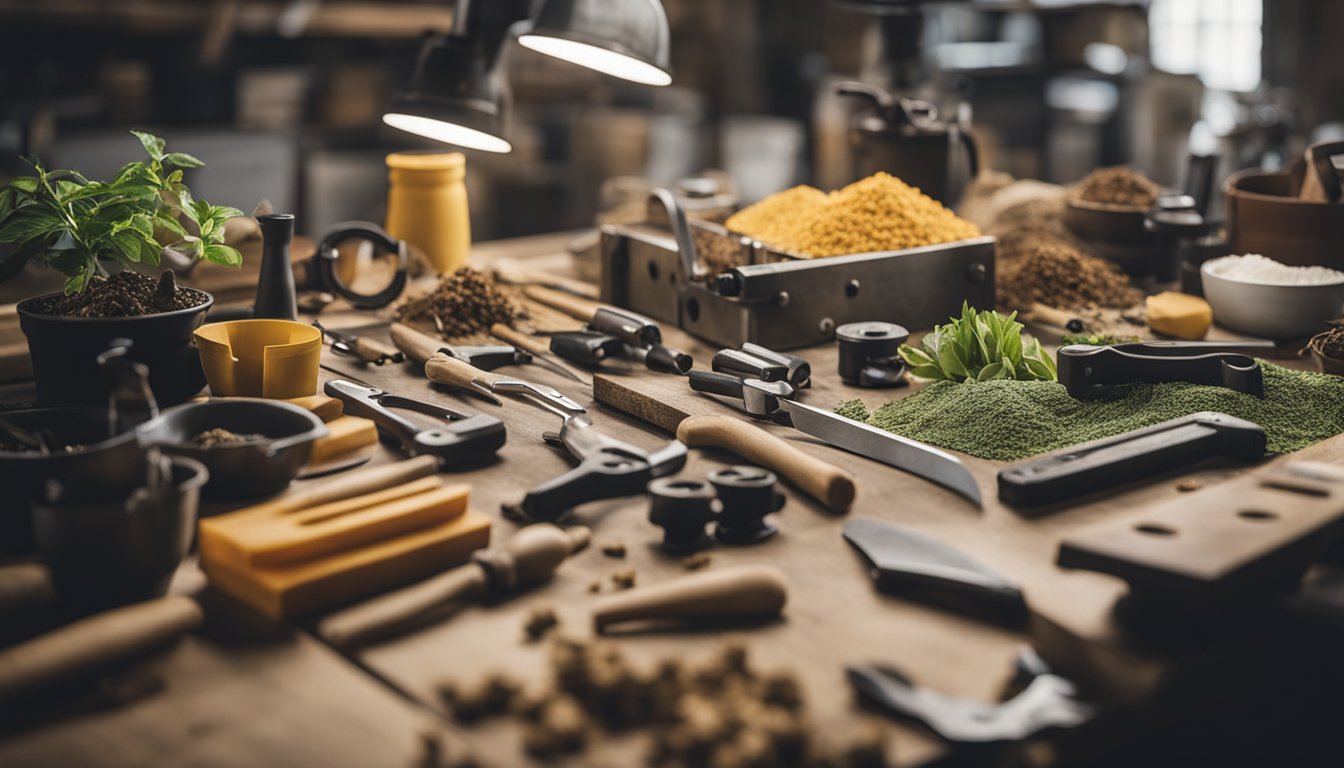
Agricultural hand tools are crafted using materials that ensure strength, durability, and ease of use. The manufacturing processes focus on creating robust tools, while sustainable production methods aim to reduce environmental impact.
Common Materials Used
Many agricultural hand tools are made from steel, known for its durability and strength. Steel blades are common in shovels, spades, and hoes due to their resistance to wear and corrosion.
Wood is often used for handles because it provides a natural grip and absorbs shock, making it comfortable for prolonged use. Fiberglass handles are another option, valued for being lightweight and strong, though they can be less comfortable than wood.
In some tools, plastic components might be used, especially in parts that do not bear heavy loads. These plastics are typically high-grade and designed to withstand outdoor conditions.
Manufacturing Processes
The manufacturing of agricultural hand tools involves several key processes. Forging is a method where metal is heated and then shaped using a hammer or press. This process increases the strength of the metal, making it ideal for tool heads.
Casting is another common technique, where molten metal is poured into a mold to create the desired shape. This is often used for making parts like gear mechanisms in adjustable wrenches.
Tools are often finished with treatments like heat-treating, which further enhances durability. Grinding and sharpening ensure that edges are ready for immediate use. Handles are typically machined for precision and then securely attached to the tool heads.
Sustainability in Tool Production
Sustainable practices are becoming more important in the production of agricultural tools. Manufacturers are increasingly using recycled materials, reducing the demand for virgin resources and lowering environmental impact.
Eco-friendly coatings and treatments are being developed to avoid harmful chemicals while maintaining tool performance. Companies are also exploring alternative materials like bamboo handles, which are renewable and biodegradable.
Energy-efficient manufacturing processes, such as using solar power or reducing waste, help minimize the carbon footprint. These steps not only benefit the environment but also often result in cost savings for producers and consumers.
Maintenance and Storage of Hand Tools
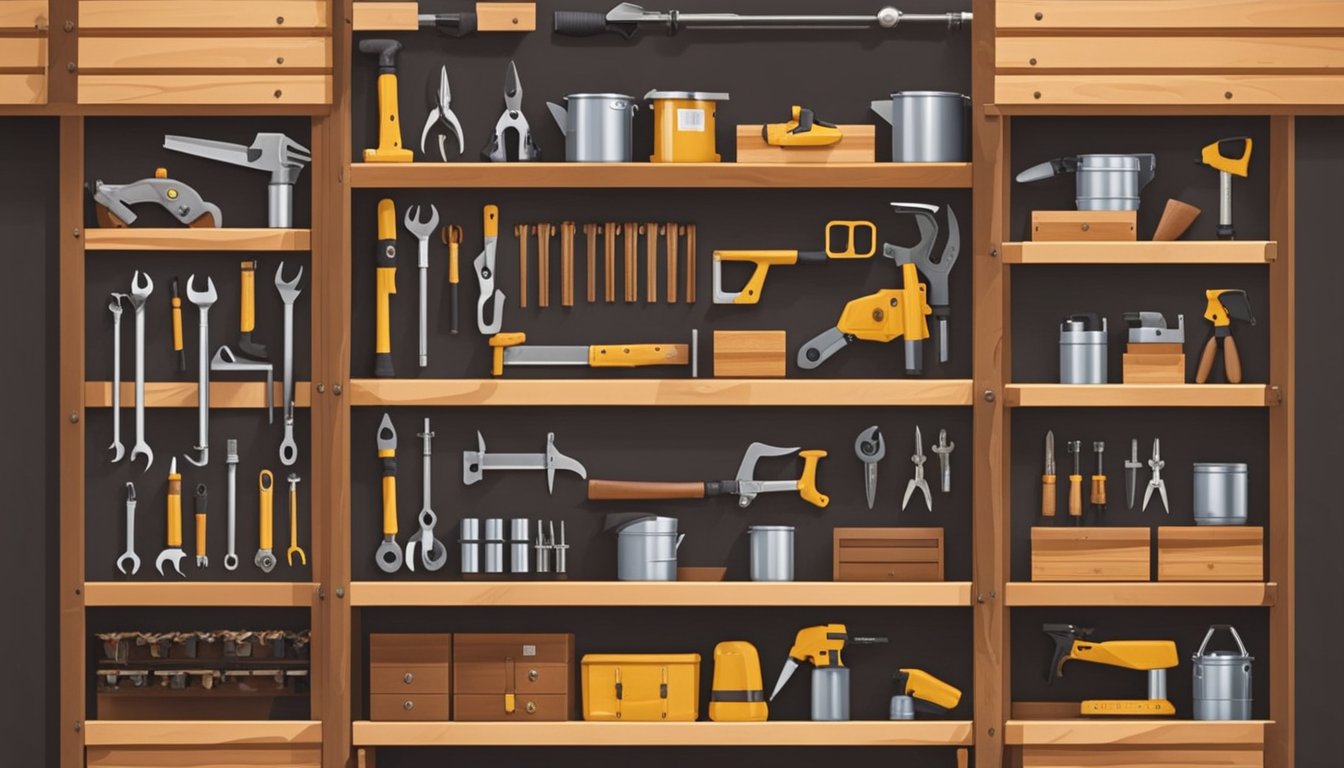
Proper maintenance and storage of hand tools are crucial to extend their lifespan, ensure safety, and maintain efficiency. Regular cleaning, proper storage, and correct sharpening techniques are essential practices for hand tool care.
Cleaning and Care
Cleaning hand tools regularly prevents rust and keeps them in good working condition. After each use, tools should be cleaned with a wire brush or damp cloth to remove dirt and debris. It’s essential to dry the tools thoroughly to prevent rust. Applying a light coat of oil can protect metal parts from moisture.
Wooden handles also need attention. They should be checked for splinters and cracks. Sanding rough spots and sealing with linseed oil can help preserve the wood. Regular inspection of tools for any signs of wear or damage ensures that minor issues are addressed before they become major problems.
Proper Storage Practices
Storing hand tools correctly protects them from damage and extends their usability. Tools should be kept in a dry, cool place to prevent rust and deterioration. A well-ventilated storage area is ideal. Pegboards, racks, or toolboxes can help organize tools and keep them off the ground, reducing the risk of damage.
Grouping similar tools together and segregating hand tools from power tools can help maintain order and make it easier to find what is needed. For example, storing rakes, shovels, and trowels together ensures that all hand tools for gardening are easily accessible.
Sharpening Techniques
Sharp tools work more efficiently and reduce the risk of injury. Tools like hoes, shovels, and pruners need regular sharpening to maintain their performance. Using a sharpening stone or file, one should follow the original bevel angle of the tool. It’s important to secure the tool in a vice to keep it stable.
Proper technique involves pushing the sharpening stone forward, not back and forth, to avoid damaging the edge. For precision, pruners and similar tools may require a finer grit stone. Regular sharpening ensures that tools are always ready for use and reduces wear on the user’s body.
Proper maintenance and storage practices are essential for keeping hand tools in top condition, ensuring they are safe, efficient, and long-lasting.
Ergonomics and Safety
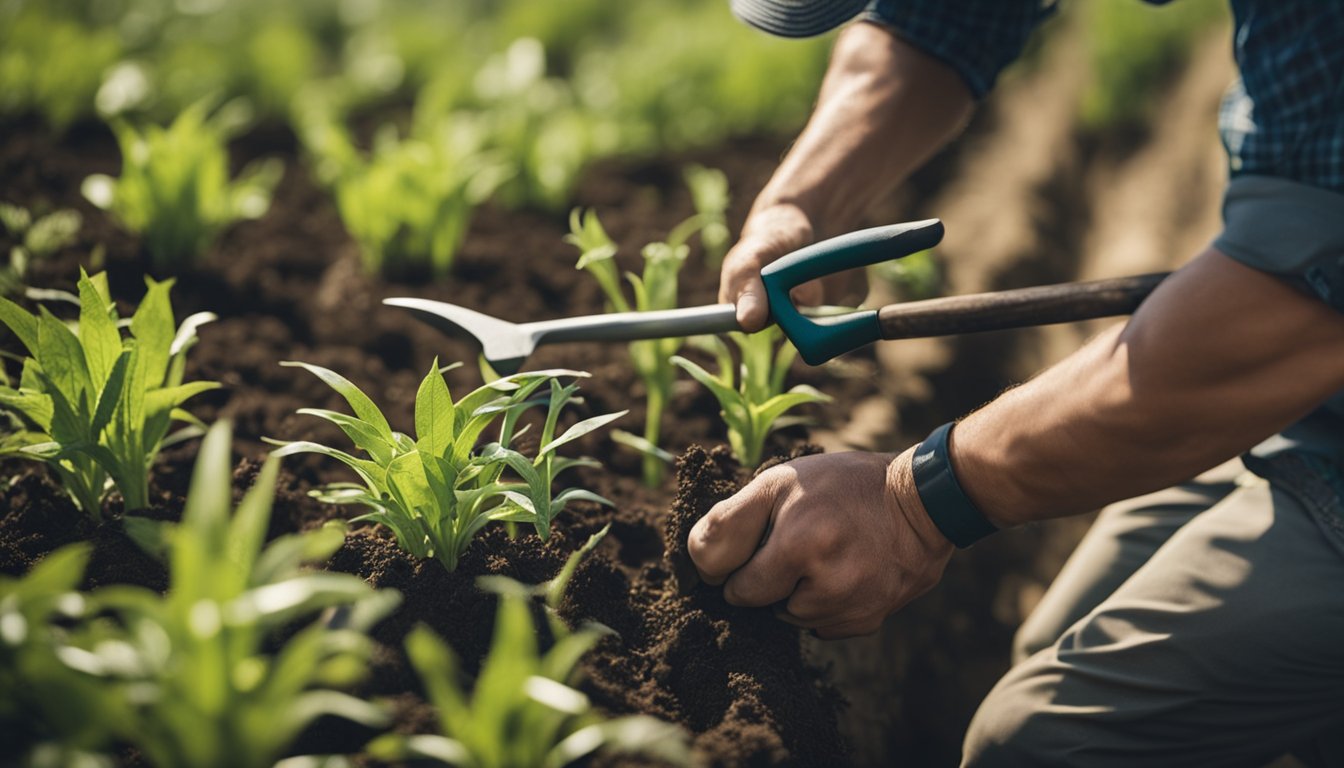
Using well-designed agricultural hand tools can significantly enhance worker comfort and efficiency. Taking safety measures can prevent injuries and long-term health problems.
Ergonomic Design
Ergonomic design in agricultural tools ensures they fit the user’s natural body movements. Tools with comfortable grips reduce muscle strain. For instance, the use of adjustable machinery seats in various farming tasks can help align the body correctly. Engineers use anthropometric data, like hand sizes and strength, to design handles that reduce fatigue.
Lightweight materials in tools make them easier to handle. Non-slip handles provide a better grip, especially in wet conditions. Properly designed tools allow for the right wrist and arm positions, reducing the risk of musculoskeletal disorders. In summary, selecting tools with ergonomic features can result in less physical strain and more productivity.
Safety Precautions
Proper safety precautions are essential when using hand tools in agriculture. Always wear personal protective equipment like gloves, goggles, and sturdy footwear. This gear helps prevent common accidents such as cuts, abrasions, and eye injuries. For example, safety gadgets can protect farmers from serious injuries.
Regularly inspecting tools for wear and tear is also crucial. Broken or dull tools can cause accidents, so maintenance is key. Proper storage of tools in a safe place when not in use can also prevent accidents. Creating a clean and organized workspace minimizes the chances of tripping and falling. These simple yet effective safety measures can significantly reduce the risk of injury.
Prevention of Repetitive Strain Injuries
Repetitive strain injuries (RSIs) are common in farming due to the continuous use of hand tools. To prevent RSIs, vary the type of tasks performed throughout the day. Frequent breaks and stretches can help relieve muscle tension. Using non-powered hand tools designed to minimize strain can also make a difference.
Ergonomic hand tools with cushioned grips reduce the impact on muscles and joints. It is also important to use tools that match the task’s physical demands. Lighter tools for lighter tasks help in reducing overall strain. By following these practices, farm workers can maintain better health and efficiency in their daily tasks.
FAQ’s about Agriculture Hand Tools
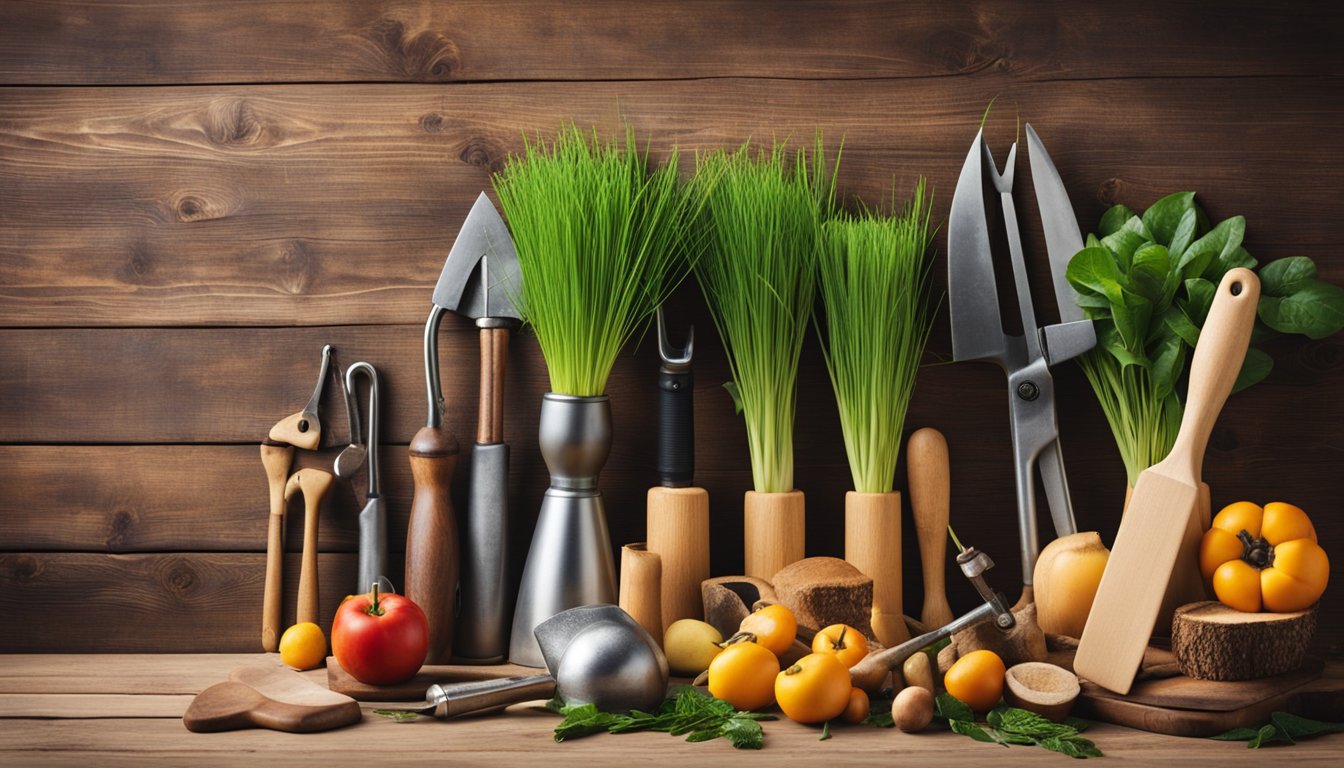
This section addresses common questions related to agricultural hand tools, including their types, uses, and where to find more information.
What are the common hand tools used by farmers in India?
Common hand tools used by farmers in India include spades, hoes, sickles, and pruning shears. These tools are essential for tasks such as digging, weeding, cutting, and trimming.
What are the primary uses of various agricultural hand tools?
Agricultural hand tools have different primary uses. For example, spades are used for digging and turning soil, while hoes are used for weeding and cultivating. Pruning shears are used for trimming plants and small branches.
Can you list names of traditional agricultural hand tools?
Traditional agricultural hand tools include the sickle, plow, hoe, spade, and rake. These tools have been used for centuries and are still in use today for various farming tasks.
Where can one find images and names of different agricultural hand tools?
Images and names of different agricultural hand tools can be found on Agro Harbor. This website provides a comprehensive guide to essential farm tools with pictures and descriptions.
How can one categorize different types of hand tools used in agriculture?
Hand tools used in agriculture can be categorized based on their function. For example, cutting tools like sickles and pruning shears, digging tools like spades and plows, and weeding tools like hoes and weeder forks.
Who are the leading manufacturers of agricultural hand tools?
Leading manufacturers of agricultural hand tools include companies like JCBL and JourneymanHQ. These companies produce a variety of high-quality tools that are essential for efficient farming practices.
Leave a Reply
You must be logged in to post a comment.